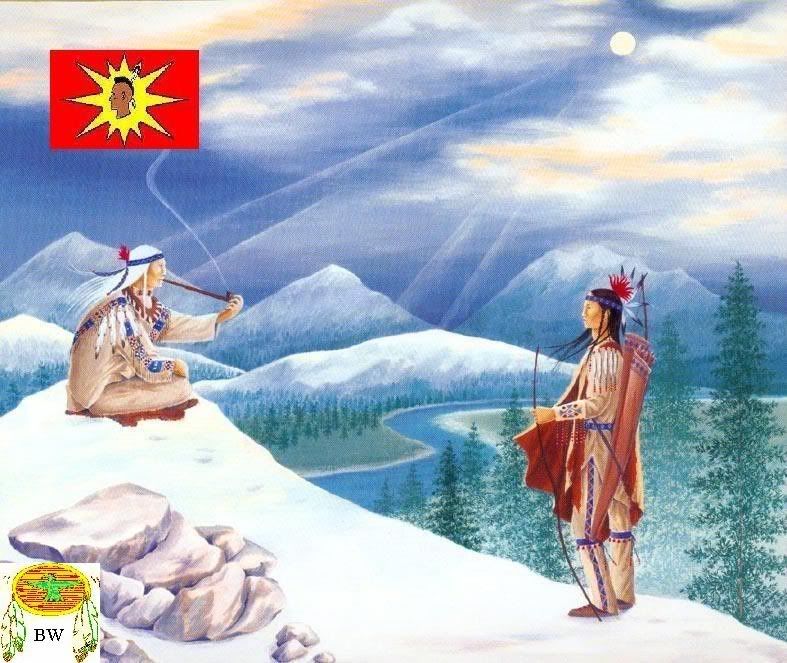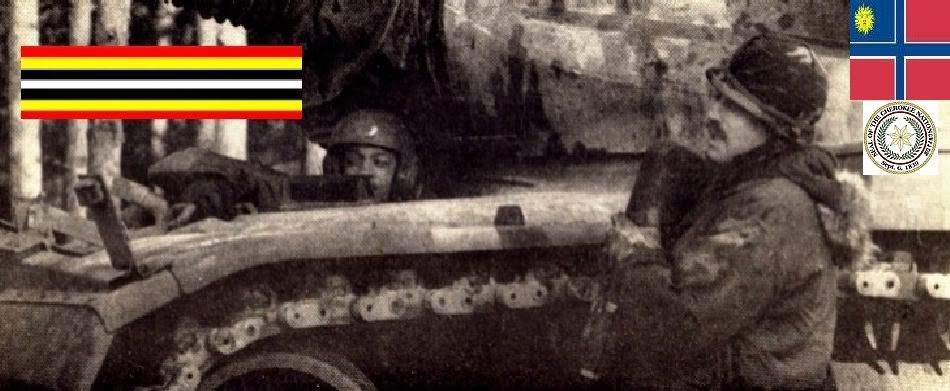|

Chief Hiawatha
Warriors Citation
The Native American honored as a leader of the Iroquois nation in Henry Wadsworth Longfellow's "The Song of Hiawatha" is not
an actual person, although Hiawatha (c. 1400) has entered American legend as such. Although the legendary Hiawatha is usually
cited as a member of the Mohawk tribe, some Iroquois traditions hold that he belonged to the Onondaga tribe. Given the uncertainty
about his tribal affiliation, it has been suggested that the legendary Hiawatha is in fact a composite of se veral historical
personages. The founding of the confederacy and the time of Hiawatha have been assigned to sometime between the late 14th
to the early 17th century. The Mohawk people once inhabited what is now New York state. They were a fierce, warlike tribe
whose members frequently sought to subdue neighboring tribes by attacking them. According to a traditional Iroquois legend
recounted in Arthur C. Parker's Seneca Myths and Folk Tales, sometime after 1390 a Mohawk chief named Dekanawida recognized
the hopelessness of his tribe's constant aggressions toward their neighbors. When his tribal council gathered Dekanawida spoke
out agai nst these incessant battles, pointing out that all the Mohawk warriors would eventually lose their lives if such
warfare continued. Eventually frustrated by the council's lack of response to his request, Dekanawida left his tribe and journeyed
to the west to escape the fighting. Reaching the shore of a lake, he paused to rest. As he reflected, Dekanawida heard the
paddling of a canoe in the lake. Looking up, he saw a man fishing for periwinkle shells by dipping his basket into the shallow
water of the lake. Paddling to shore with a canoe full of quahog or round clam shell s, the canoeist built a fire and proceeded
to shape the shells into wampum beads. Varying in color from white to purple, these half-inch-long wampum bead were strung
in patterns on elm fiber or sinew thongs and worn as belts. As he finished each belt, the canoeist touched the shells and
spoke. After the man had made the last of his wampum belts, Dekanawida announced his own presence, and the canoeist introduced
himself as Hiawatha.

Dekanawida asked Hiawatha about the wampum belts, and the canoeist explained that they represented the rules of life and good
government. The white shells signify truth, peace, and good will, he explained, while the black shells stand for hatred, war,
and an evil heart. Hiawatha went on to explain that the string in which black shells alternate with white indic ates that
peace should exist between tribes, while the string with white on the end and black in the middle means that wars must end
and peace should be declared. Dekanawida recognized the wisdom in Hiawatha's philosophy and thought his Mohawk kinsmen could
benefit from it. Tribes speaking the same language should stop fighting each other, he realized, and instead unite against
their common enemies. Hiawatha explained to Dekanawida that he had tried to share his philosophy with Chief Tadadaho of the
Onondaga tribe, but that Tadadaho had forced him to leave. That was why he now professed his laws in seclusion, at the lake
where Dekanawida now found him. The ba nds of wampum he created would one day serve to remind future generations of Hiawatha's
laws and their meaning. Dekanawida asked Hiawatha to return with him to his Mohawk village, and the two traveled east. After
reaching his village, Dekanawida called a tribal council to listen to Hiawatha. The Mohawks were impressed with Hiawatha's
philosophy and readily ag reed to live by them. Dekanawida and Hiawatha next traveled to the neighboring Oneida and Cayuga
tribes, and they too agreed to be bound by Hiawatha's guiding rules. Finally the two men journeyed to the Onadaga and confronted
Chief Tadadaho. Upon learning that three of the Iroquois nations had already agreed to abide by Hiawatha's philosophy Tadadaho
fled into the woods. Although the evil spirits possessing Tadadaho hung from his head as serpents, Dekanawida and Hiawatha
bravely followed. Hiawatha assured Tadadaho he would be allowed to be the head chief of the Iroquois Confederacy if he promised
to govern in accord with their philosophy of peace, at which Tadadaho relented and joined the confederacy. Dekanawida and
Hiawatha also visited the Seneca and ot her tribes to the west, but only the Seneca agreed to join the Iroquois Confederacy.
From: historical accounts & records


LINK TO BRAVEHORSE WARRIORS VOLUME TWO
|

